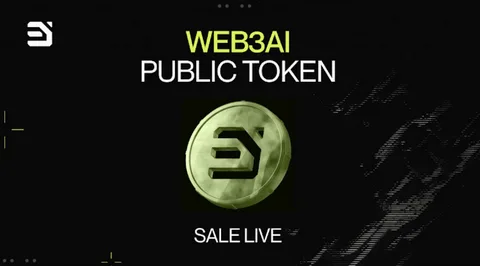Introduction
Shiba Inu (SHIB) has been one of the most talked-about cryptocurrencies in recent years, gaining immense popularity among retail and institutional investors alike. However, recent on-chain data suggests that SHIB whales are going offline, reducing their activity and influence over the market. This shift has raised concerns and speculations about its potential impact on the market and investors.
Whales—large holders of cryptocurrencies—play a crucial role in shaping price movements, liquidity, and overall sentiment. When whales go offline, it could signal various possibilities: a market cooldown, accumulation before a big move, or a shift of focus toward other assets.
In this blog, we will analyze what this trend means for Shiba Inu (SHIB), the market, and investors. We’ll also examine the recent whale movements, potential reasons behind their inactivity, and what retail traders should expect going forward.

1. Understanding the Role of Shiba Inu Whales in the Market
Whales hold a significant portion of the total Shiba Inu (SHIB) supply, meaning their buying and selling actions can influence price trends. Typically, these large holders engage in strategies such as accumulation, dumping, or even market manipulation to maximize their profits.
Historically, SHIB whales have been responsible for massive price surges and declines. When whales accumulate, it often signals a bullish trend, as their purchases reduce available supply, driving up prices. On the other hand, when whales dump large amounts of SHIB, the market experiences sharp corrections, leading to panic among smaller investors.
Recent reports show that SHIB whales are going offline, meaning their trading activity has decreased significantly. This can result in reduced volatility, making it difficult for traders to predict price movements. While this might seem like a stabilizing factor, it can also indicate uncertainty or a lack of confidence in the market.
2. Why Are Shiba Inu Whales Going Offline?
The sudden decrease in whale activity raises several questions. There are multiple reasons why SHIB whales might be going offline, including:
A. Market Uncertainty and Bearish Sentiment
The overall crypto market has been experiencing fluctuations, with Bitcoin and Ethereum facing significant resistance levels. This has made many large investors cautious, leading them to reduce their activity in smaller altcoins like Shiba Inu (SHIB).
B. Whales Accumulating in the Shadows
Sometimes, whales “go offline” in the sense that they stop making large, public transactions but continue accumulating through smaller, less noticeable trades. This is a common strategy to prevent triggering retail FOMO (Fear of Missing Out) before a planned price surge.
C. Shift to Other Investment Opportunities
Whales are always on the lookout for better opportunities. If they believe that other cryptos or asset classes offer better short-term gains, they may temporarily go offline from Shiba Inu (SHIB) to invest elsewhere. Recently, reports indicate that some SHIB whales have been shifting funds into emerging cryptos like Rollblock (RBLK)
D. Market Manipulation Tactics
Some whales deliberately go offline to create a false sense of security or panic among retail investors. By reducing their trading volume, they might be setting up the market for a major move—either a pump or a dump.
3. What This Means for the Market and Investors
With whales going offline, the Shiba Inu market is experiencing a period of lower volatility and uncertainty. But what does this mean for regular investors?
A. Reduced Volatility in SHIB Price Movements
One immediate impact of whales reducing their activity is lower volatility. This means SHIB investors may see smaller price swings, making short-term trading less profitable but offering more stability for long-term holders.
B. A Shift in Control to Retail Investors
With whales offline, the SHIB market could become more influenced by smaller investors rather than large holders. This democratization of control could be beneficial, as it may reduce sudden market crashes caused by whale sell-offs.
C. Potential for a Market Rebound
If whales are accumulating in the background, their return could lead to a major price surge in Shiba Inu (SHIB). Investors should keep an eye on on-chain data to identify signs of re-accumulation, such as increased whale wallet balances [5].
D. Cautious Approach for Retail Investors
While whales going offline might seem like a positive sign, investors should remain cautious. A sudden reactivation of whale activity could result in sharp price movements, requiring careful risk management.
4. How Should Investors React?
A. Monitor Whale Wallets and Transactions
One of the best ways to stay ahead in the Shiba Inu market is to track whale movements. Websites like WhaleStats and Etherscan provide insights into large wallet transactions, helping investors make informed decisions.
B. Avoid Panic Selling
Retail investors often panic when whale activity slows down, fearing a price crash. However, history has shown that SHIB’s market cycles include quiet accumulation periods before major surges.
C. Diversify Investments
Since whales might be shifting funds into other assets, it could be wise for investors to diversify. Keeping a balanced portfolio can help reduce risks associated with sudden market shifts.
D. Stay Updated with Market News
Following crypto news sources and community discussions can provide insights into potential catalysts that could bring whales back into the Shiba Inu market.
Conclusion
The recent trend of Shiba Inu (SHIB) whales going offline has introduced a new dynamic in the market. While this could lead to short-term stability, it also raises concerns about future volatility when whales return. For investors, the key strategy is to stay informed, avoid panic decisions, and be prepared for any potential market surge or downturn.
What do you think about this shift in whale activity? Do you believe whales are accumulating, or are they leaving the SHIB market for good? Leave a comment below and share your thoughts!






